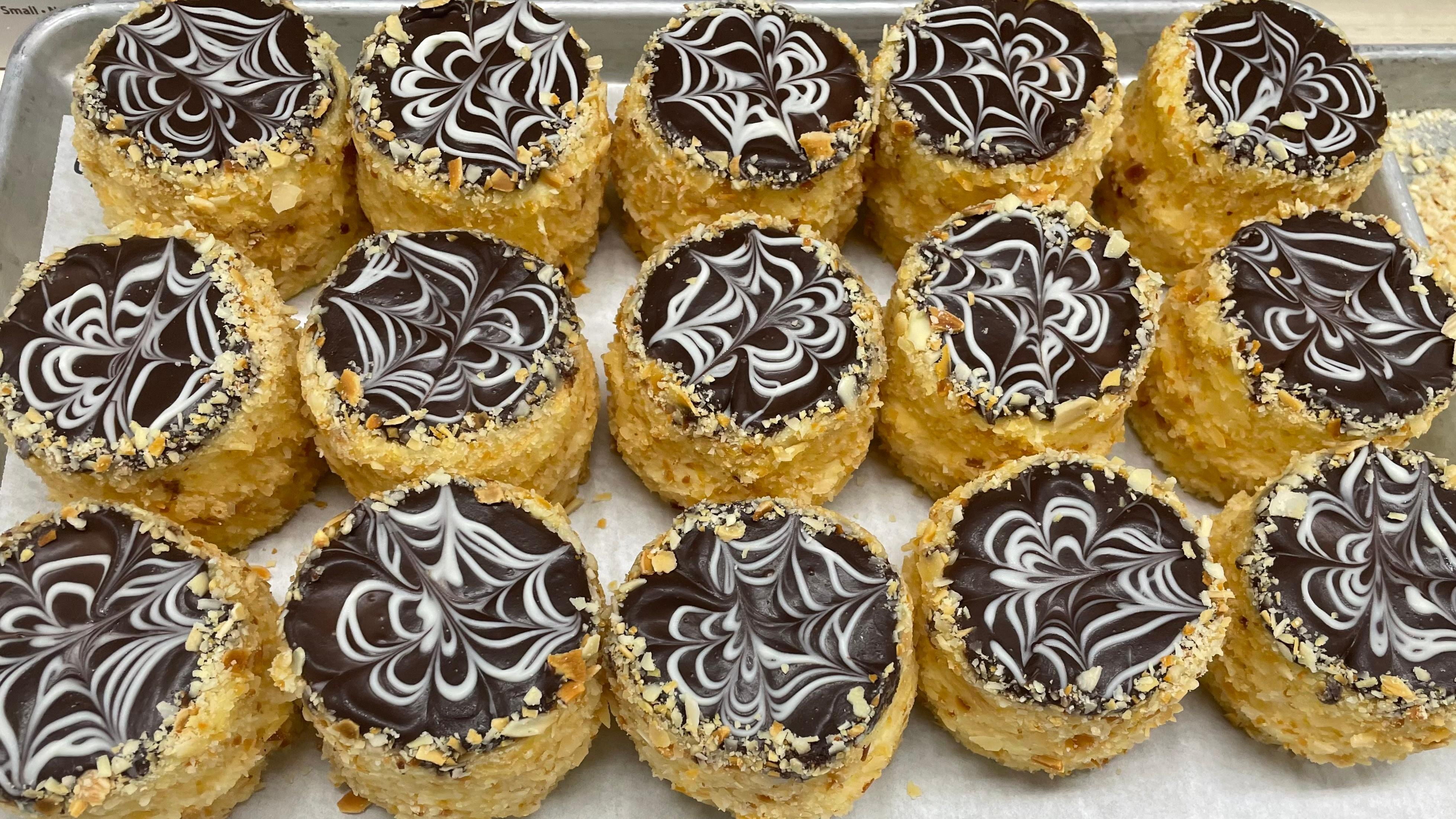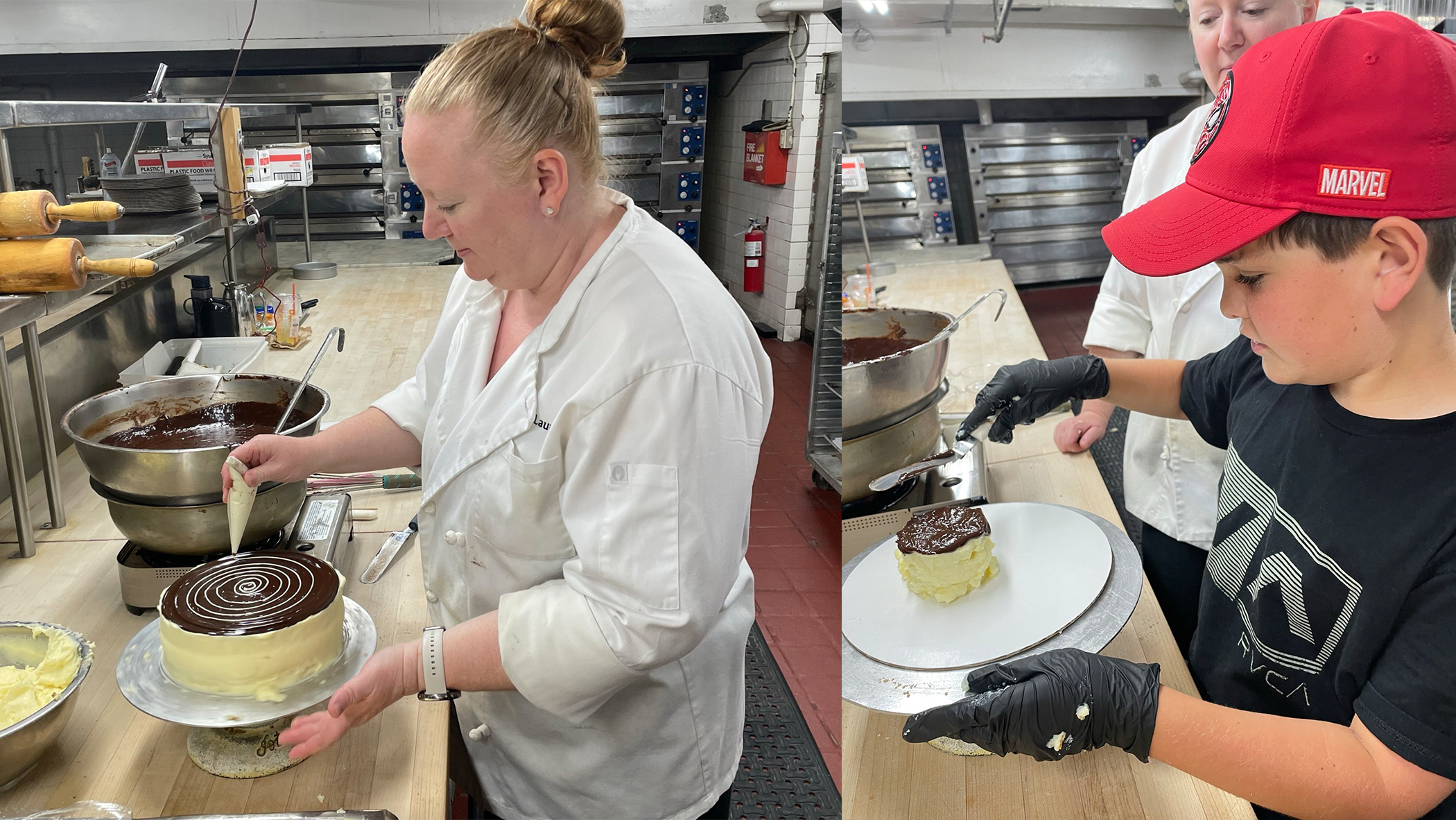The Boston Cream Pie Is A Lesson In Perfectionism
In honor of National Boston Cream Pie Day (Oct. 23), we look back at the making of a legend.
There are some regional treats so beloved that even their names evoke a sense of place: Think brisket and you think Texas. The words "deep dish" instantly transport you to Chicago. Beignets are New Orleans on a plate. Cheesecake, though ubiquitous, will still bring New York to mind first. And given that its name holds the city itself, the Boston cream pie might take the cake.
Not that it was originally named "Boston cream pie." When Boston's Parker House Hotel pastry chef invented it in the late 19th century, it was simply called chocolate cream pie. Perhaps that's an insight into how comparably rare a cream pie was back then—and even chocolate, for that matter.
The origins of Boston cream pie
The Parker House Hotel, now named the Omni Parker House, dates back to 1855, and until the pandemic forced its temporary closure it was the longest operating hotel in the United States with 165 years of continuous service. In part because of this longevity, the hotel has two culinary claims to fame: In addition to Boston cream pie, it was also the site where the eponymous Parker House roll was created, and that name still appears on menus nationwide to indicate diners are about to butter up something a notch above ordinary dinner rolls. The dessert, meanwhile, only got its "Boston" moniker once the Betty Crocker cookbook featured a recipe for "Boston Cream Pie" in 1950. (Betty Crocker's Boston Cream Pie instant cake mix debuted in 1958.)
As desserts go, it's actually rather simple: a round sponge cake sliced in half, held together by a layer of pastry cream (custard) and topped with a thin layer of chocolate ganache. Yes, the Boston cream "pie" is actually a cake; many desserts were called pies in America's early days, the way the English call their various desserts puddings.
At the time of its creation, chocolate was a rarity in desserts. But with the Parker House's proximity to the first chocolate mill in America, the Baker's Chocolate Company—named not for its use in baking as one might expect, but for its founder, Dr. James Baker—French-born chef Augustine François Anezin helped popularize chocolate's application in the hotel's after-dinner delights. In the contemporary era, the Parker House embellishes its Boston cream pie with an additional coat of cream that's used as adhesive to hold an outer crust of toasted slivered almonds, as well as a decorative lacing of white chocolate icing.
Chef Anezin is long gone, but today, pastry chef Laura Boyd-Figueroa helms the subterranean kitchen, where she bakes, blends, and tempers the primary ingredients before cutting, frosting, spreading, and encrusting some 200 mini versions of the signature cake each weekday. On weekends the hotel sells around double that. Then there are the full-sized 8" Boston cream pies that require the use of a turntable so the custard and ganache can be evenly spread. Boyd-Figueroa invited both my grade-school son and me into the kitchen to see how each cake is prepped. As we soon found out, it's harder than it looks.
The art of the Boston cream pie
Boyd-Figueroa is the embodiment of "ten thousand hours." Her assembly of each cake is picture-perfect, down to the webbing effect of white chocolate fondant laced into the upper ganache, and nary a sliver of almonds appears out of place. When she invited us to try making our own Boston cream pies, my attempt was, at best, semi-okay. And while I shouldn't throw my kid under the bus, his cake epitomized the first few minutes of that 10,000-hour journey. The cream was clumpy. The chocolate was lumpy. Random slivers of almonds accidentally got stuck to top, while bare patches remained along the sides.
That said, Chef Laura was gracious and complimentary. And of course, these less picturesque attempts tasted every bit as good as her professional-looking ones. As if to prove it, my son wolfed his down before we made our way out of the immaculate hotel kitchen.
I asked Boyd-Figueroa how she felt about Omni Parker House's renowned creation being co-opted by virtually every doughnut shop around the country. She's well aware that Boston's titular cream pie enjoys cult status, and she not only appreciates the myriad takes on the cake, but showed me pictures of her own riffs, too, from Boston cream pie cookies to the Boston cream pie martini that had just made it to the hotel's bar menu, made with vanilla vodka, chocolate liqueur, and Bailey's Irish Cream (though I'd recommend adding a dash of Amaretto to mimic the almond-crusted outer layer). If you can't get the original dessert on site at the Omni Parker House, your local doughnut shop is bound to have them.
After visiting the home of the original Boston cream pie, I sampled its equivalents around town. Kane's Donuts, located less than half a mile from the hotel, made the best one I discovered in Boston, and not just because it was also the biggest. The famed Mike's Pastry in Boston's North End neighborhood, famous for its cannolis, makes a mean Boston cream puff. They weren't all winners, though—I went to two different Dunkin' locations, and their Boston creams were tied for dead last by a mile. Someone tell Ben Affleck before his next drive-thru run.

